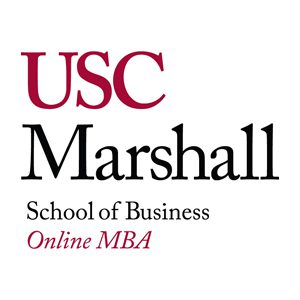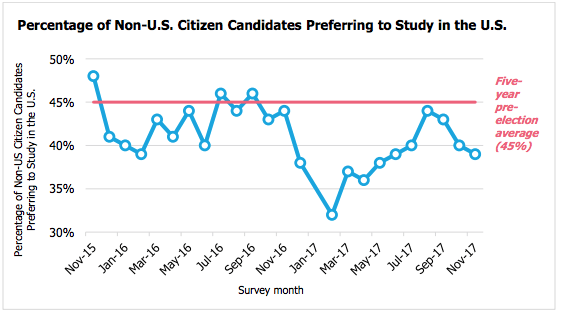How Virtual Work Can Learn from the Virtual Classroom

Sponsored Content
How do you connect a workforce spread across different cities, countries and continents?
Finding the answer to that question is among the biggest challenges and opportunities for modern organizations—businesses, non-profits and academic institutions alike. Virtual collaboration and telecommuting are nothing new, but the technology that supports these practices is evolving faster than it ever has before. In fact, the first trend in Deloitte’s 2017 Global Human Capital Trends report indicates that the constant pressure to adapt to digital transformation and create “the organization of the future” is the most important challenge facing executives around the world.
Virtual collaboration is rapidly becoming important in the academic world as well, with leading schools like USC Marshall offering mostly online education programs, including its top 10 online MBA program. These programs challenge and teach students to learn, collaborate and communicate more effectively in virtual classrooms as well as in business settings.
Deloitte also makes the point that individuals usually adapt to technology quickly, while organizations take longer to adapt to changes in technology. As a result, there is considerable demand for business leaders and professionals who are not only familiar working and collaborating within virtual environments, but who can also lead and manage virtual teams.
Of course, this is more than just a distance problem. Global businesses face culture and time differences, and many offices may even operate with different technology and processes from each other. The organizations that pull ahead in the new digital age will be those that can continuously look forward to how they can effectively utilize technology to overcome distance, cultural and various other barriers to true collaboration in a virtual space. Fortunately, many of the technology limitations that inhibited remote collaboration are disappearing.
The Future of Virtual Collaboration: Already Here in the Classroom
There is still a lot of room for both software providers and businesses to grow. Although the future of virtual collaboration looks promising, the best practices for using virtual collaboration tools may not be where you think: Instead of businesses, it may actually be universities leading the charge.

In 2017, for example, the USC Marshall School of Business collaborated with IBM to teach students virtual collaboration skills. Students were given a group project with one big caveat: They would never meet other members working on the project in person. USC worked with IBM to create an online collaboration platform, so that students could work together remotely.
“Once we moved to a single collaboration platform using the IBM Connections tool … all of a sudden, they’re in this single space,” said Peter Cardon, Academic Director and Professor at the USC Marshall School of Business. “They’re integrating their work. There’s this level of accountability. And they can see what one another are doing to really contribute to the project, and that dramatically improves their ability to produce really quality results.”
According to Cardon, the success of the initial project created demand for similar initiatives designed to encourage collaboration among students across the world and from different cultures. This in turn shows how the skills taught by these initiatives as well as learnt intrinsically in top online MBA programs are critical for solving the challenges that inhibit the adoption of enterprise virtual collaboration.
USC’s Online MBA (OMBA) program provides additional examples of how virtual collaboration can be used successfully to solve real-world business problems. Courses are structured so that students participate in two live video sessions each week; this gives them opportunities to ask questions and more actively engage with faculty. The program also includes a one-unit course that focuses entirely on virtual collaboration, including best practices and technologies for enabling successful collaboration in the workplace. According to Miriam Burgos, Academic Director of the OMBA program, students are given opportunities to reflect on how the skills they learn through virtual collaboration influence their leadership and business expertise.
Students in the online MBA program must also work together to analyze and solve real-world business problems. In one of the first semester-long group projects, for example, students analyze data-driven business strategies. All the data and analytics for these projects are done and coordinated remotely by students from around the world. Each group must then virtually present their findings at the end of the semester.
“It’s incredible to see … how students from all over the world—from the U.S. to England to Dubai—are actively networking in an online environment,” Burgos told MetroMBA. “The live class sessions get them engaged with the coursework and each other, and they can take these skills outside the classroom. Students often tell us that what they learn in the classroom makes them stronger leaders in their workplaces … they start seeing an immediate impact on their careers.”
What Businesses Can Learn from the Virtual Classroom
Encouraging the use of virtual collaboration in business settings has historically been an uphill battle. For instance, many collaboration tools face limited user adoption because they do not offer a seamless transition between employees’ workflow and the collaboration tool; this will change as pressure mounts on businesses to embed collaboration functionality with existing tools and processes. Furthermore, a new generation of business professionals will have already gained proficiency in leading and managing online, collaborative projects; these professionals will be able to shift business processes to be more accommodating of virtual collaboration. At the same time, enterprise virtual collaboration will evolve due to several key industry trends, including:
• Communication channel variety: The number of potential channels for collaboration will grow. Some employees shine in face-to-face meetings, but others will shine most in virtual environments. The businesses that master digital transformation will provide a mixture of synchronous collaboration, such as real-time video meetings, and asynchronous collaboration tools, such as file sharing or cloud-based content management.
• Collaboration integrated with content and workflow: The best collaboration tools are only effective if users adopt them. This will push businesses to seamlessly integrate collaboration tools with project management and workflow tools so that collaboration can take place within existing business process and tools.
• Spontaneous Virtual Collaboration: One of the central challenges of virtual collaboration in the past is that it is difficult to mimic in-person experiences like spontaneous brainstorming sessions around the water cooler. Technology integration will help facilitate this; for instance, when chat and video call functionality is integrated with file sharing, it is much easier to discuss designs, plans or other documents while making changes in real time.
In the long-term, businesses will also have access to technology that dramatically alters the virtual collaboration landscape by placing emphasis on more realistic immersion and connection between employees. This is already starting to take shape in technology solutions. For example, platforms such as Cisco Spark VR allow teams to collaborate in full virtual reality environments. Many of these solutions remain in early access or beta testing stages. The solutions’ potential to connect employees across the world, however, is limitless. In the case of Cisco Spark VR, the platform creates virtual rooms where people can meet to share 3D images and documents.
Yet, the potential for these platforms extends far beyond meeting in VR spaces. Imagine a future where artificial intelligence makes video calling remote employees a seamless experience, with AI providing virtual name badges and getting rid of background noise automatically. It may be a while before we see full VR conference rooms, but if you want leaders who are at the cutting edge of virtual collaboration, it’s time to look inside the virtual classroom.
To learn more about the USC Marshall School of Business Online MBA, visit the Marshall website.
The QS World MBA Tour Is Coming To These Select Cities

There are few better opportunities to learn about the exemplary business school opportunities than at an MBA fair. And luckily, for many prospective MBA students, that opportunity will soon be arriving in their city with the QS World MBA Tour.
Are International MBAs Avoiding the United States?

Based on data from the most recently Graduate Management Admissions Council (GMAC) monthly survey, interest in U.S. business schools among international MBA candidates is still below pre-2016 election levels. In fact, it’s below the previous five-year average for each month since the election. And in each of the last three months—between September and November 2017—international application volume has decreased.

Image via GMAC report.
Just before Donald Trump’s election victory, approximately 46 percent of international MBA applicants surveyed by GMAC responded that they would prefer to study in the United States—above the 45-percent, five-year, pre-election average. But not once since November 2016 has that been the case. The percentage of international applicants indicating a preference for U.S. business schools plunged at the beginning of 2017, to below 40 percent in January and just over 30 percent in February. Summer 2017 saw a bit of a rebound—though never reaching 45 percent—but international interest has again declined this fall.
Of 1,992 non-U.S. candidates surveyed between September and November 2017, 23 percent shared that they had previously thought about applying to a U.S. program but have since changed their mind. As for the reasons behind applicant reluctance:
- 54 percent cited concerns about obtaining a job in the U.S. post-graduation
- 51 percent admitted concerns about gaining a student visa
- 47 percent cited safety and security concerns
- 42 percent talked about the political environment
- 39 percent admitted racism and discrimination fears
In addition, when GMAC surveyed nearly 700 U.S. MBA programs, about half admitted that they had received fewer international applications than in the previous year. Only 31 percent reported an increase in international applications. Another 20 percent reported no significant change.
For additional insights from GMAC as well as continued tracking of international candidate interest, visit the GMAC research website.
This article has been edited and republished with permissions from our sister site, Clear Admit.
CO.STARTERS at Mercer University Shaping New Community of Entrepreneurs

The Mercer University Eugene W. Stetson School of Business & Economics recently launched CO.STARTERS, a new business development program providing the resources and connections necessary for the Middle Georgia community to turn ideas into action.
Since October, CO.STARTERS has been helping small-business owners to develop their businesses by building and testing simple models that receive feedback in real-time. CO.STARTERS is a nine-week long, cohort-based program that also uses community support to help in the process of business leaders developing their models. Instead of approaching startups like large corporations, the programs model encourages the testing of small models before diving into creating a broad model of business. Registration is open to the public and includes a fee of $199.
Although the relationship between CO.STARTERS and the Mercer Innovation Center is fairly new, the CO.STARTERS program has already had a global impact, serving communities throughout the United States, and even all the way to New Zealand and Australia.
“We are excited to be adding CO.STARTERS to the Mercer Innovation Center program offerings,” MIC deputy director Stephanie Howard said. “This hands-on program will be an asset to the entrepreneurship ecosystem in the Macon-Bibb community.”
Enoch Elwell, CO.STARTERS founder, commented how many communities across the country are overlooked as business centers but often have a wide range of talented entrepreneurs. These communities need extra support for entrepreneurs to provide them with the tools and resources to thrive.
“CO.STARTERS provides a structure for these communities to achieve their economic growth goals and gives them an easy way to build the connections they are already trying to grow,” Elwell says.
Stanford Prof Talks GOP Income Tax Strategies

Stanford’s Graduate School of Business professor and former tax strategy advisor Lisa De Simone recently discussed the potential for the GOP to fix the corporate income tax system, whose rate he wants to cut from 35 percent to 15 percent. The new prospective corporate tax rate would drop the United States, currently the third highest in the world, to well below the 29.5 percent weighted average rate.
Ivey Women Join Roundtable Discussion at White House For Women in the Workforce

During Prime Minister Justin Trudeau’s visit to the White House to speak with U.S. President Donald Trump, they—along with female business leaders from both countries—held a roundtable discussion about women in the workforce. According to The Globe and Mail, the goal of the discussion was to find “common ground with the new U.S. administration.” Invited to the discussion were two Ivey women graduates as well as a former Ivey dean. At the end of the roundtable, a White House official said the two countries would launch a new task force called the United States Canada Council for the Advancement of Women Business Leaders-Female Entrepreneurs. Continue reading…
